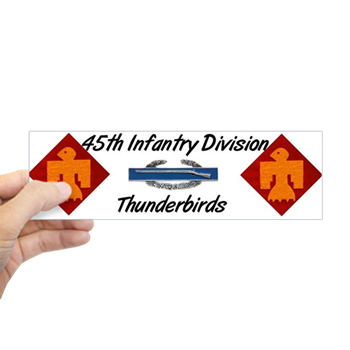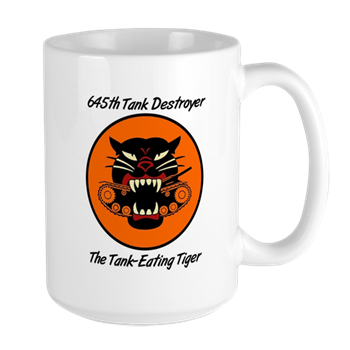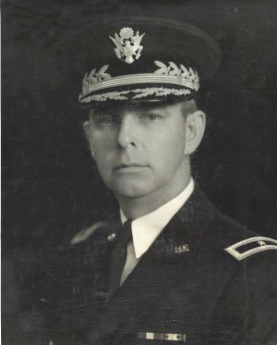BG McLAIN's
|
|



 |
DIARY OF THE SICILIAN CAMPAIGN part two
GO TO PART ONE |
|||||||
|
The next day we advanced on Caltanissetta. I went in just before noon, Middleton had already been in. Funk was following Ankorn and doing some firing. I moved Muldrow up and told him to go in just west of town. While waiting at the road fork, an old man came by carrying the mangled form of a boy about ten. The boy was still conscious. He passed slowly down the road. The boy was about the size of my Bobby. A doctor came by and I sent him to do what he could, but the boy was dying then, a woman looked on in horror and said something. The interpreter said it was that if it were her child she wanted to kill herself. Later I learned the child had picked up a German grenade left alongside the road and it had exploded. They left many little red grenades along the road. The Division chaplain said he had found two corpses with these grenades with pin pulled pushed in the dead man's pocket so that when removed they exploded. These simple people and especially the children in this area picked up everything. They stayed in the combat area, because all they had was there. Life hung heavy and by a narrow thread. Separated from their roof, from their few possessions, life was not worth living. Better to meet death here where they had spent their lives, there where they could get a few vegetables and green stuff, pick up twigs and weed stems for fuel; where a few stone water jugs and crocks, and any kind of bed pad stuck in a dark room meant livelihood. They asked no more and were blessed if they had a donkey to help carry the water or fuel up the steep hills. Without this, faced with separation from families and friends, life meant nothing. Some took a few things and hid in the hills; came straggling out as the Americans moved the battle forward at a fast pace. Unfortunately the weapons of death searched the hills. One woman and small child came in from the hills. A shell fragment had hit her in the side. The child's arm and leg had been badly cut from a shell. The doctors treated it with sulfa powder, bandaged it and bound up the child. It would probably live. She wanted to pay. Of course the doctor refused, but hours later where the work had been done lay a small l0 cent store wedding ring. She had left probably the only thing of value she possessed.
That night I had a bath in a square basin in the palace of the Fascists, and slept in a fine bed with fine linen and soft covering, magnificent chandeliers, and drapes. I ate with Middleton and Patton and Bradley, Teddy Roosevelt, Jr., who had come in, dust-covered from the 1st Division to coordinate a road which we had to share with him the next day-General King and Cushman, in the grand dining hall with the china and glassware in profusion. Cushman had found a smoked ham and it was sure good; reminded me of old Kentucky. It was a magnificent palace. In one room was a large portrait of Garabaldi and his consort. The town had been badly bombed and the concourse in front of the place lined with rows of blooming oleanders, was completely blocked in the direction of town by craters as wide as the street, Next to it a barracks for soldiers had a bomb crater on either side. One thing impressed me. These socialistic disciples who preach equality of property are the greediest in surrounding themselves and their satellites with the finery of the domain and supplying themselves with the best in the land and in profusion. This is accomplished through their position not through their efforts as is the case with a capitalistic country. The next day I went out along the route of advance to the North. Things were moving fast and I went up with the Infantry. I saw the 1st Division would cut off our artillery soon, so radioed Funk and Larson both to put all batteries on the road at once and come forward for positions. This was pushing them well out ahead of the infantry, but resistance was slight and Funk especially got some good shooting.
That night I abandoned the Palace and moved into an uncompleted granary at San Caterina (July 19th). The Fascist officials had granaries everywhere. One man said he was only allowed to keep 10% of his grain for food and seed. This was a great wheat country. The hills were full of it. Funk had got a good bag during the day. Later we counted six self-propelled 90mm's between S Caterina and Resuttono as well as other vehicles. A native in the town told us where the enemy was hiding behind some cliffs. It looked reasonable. Funk was there and I asked him to put down three rounds, using high angle. He did so in about five minutes. Results were unknown, but resistance cleared out and the 179th went through Ankcorn who had been leading for several days. Next night we moved five miles Northwest of S Caterina. We lost some vehicles in the dry fields by individual cooking stoves turning over or a careless cigarette thrown down. Our C.P. was in a country place. I slept in a bed room, but on the floor, or my own bed roll. The family had fled. The caretaker gave us leave and we left it cleaned up and in good shape. On July 21st we moved to Vallelunga about 1/2 mile northwest of the town. Hutchins and Larson had been sent Northeast and Cookson and Kenny Northwest to Roccapalumba where they captured immense stores of gasoline and oil, wire, and much other engineer supplies. There were several square miles of fields covered with petroleum barrels. Many had been burned, but some had not. The station and many warehouses had been burned.
Our zone had been switched from Palermo to Termini Imerese. Cookson had had a patrol in Palermo. There was no resistance. Hutchins was sent across a bad road to approach the sea by Collesano. Ankcorn was again brought up and marched on Cerda to take the road junction East of Termini Imerese. He had a tough fight near Cerda that night. On the 22d I went forward in the 179th column, marching on Caltavuturo. A bridge was blown. The engineers were pushing a by-pass with an infantry patrol about 100 yards up the road and a patrol from the Recon troop on up the road. As I approached I saw the jeep of the Recon patrol streaking the dust back. He said the enemy was encountered in Force at Caltavuturo. I went back and met General Middleton coming up, I reported to him and he had seen the patrol and talked to them. He said he thought they were moving back, Middleton went on forward. I went back and asked Larson to interdict the road north of the town. It took him 1/2 hour to get off the mission as they had not registered. The mission was fired from map data on a 1/50,000 map and had to be very inaccurate, but I wanted to add momentum to their retreat. This was fired by the 17th Field which had been attached to Larson forming groupmont Larson. I then went forward, passed through the infantry, and got to the bridge about 3/4 mile from Caltavuturo. Straun was there with a detail of engineers. A Recon patrol was moving on the town. I radioed Larson to put all his light batteries on the road, and to come forward himself for position area. He met me a little above the bridge and I showed him where I thought he could go in. I went back, but on top the hill turned back and met Larson coming up. He said he couldn't get in down by the bridge and I told him there were several good positions on the ridge, Y Battery, a provisional self-propelled battery, was then up with us. Enemy reconnaissance was noted to our right rear in the direction of Polizzi. Larson emplaced Y Battery to cover this ridge and the remainder of the battalion on the ridge and the ravine below with mission to begin interdiction of the road Polizzi-Generosa-Colesano as soon as possible. The infantry was then two or three miles behind with its leading elements. But I figured it was a pursuit situation and we could afford the risk to prevent their placing mine fields, and I believe it was the aggressive work of the engineers and of the artillery that kept us relatively free of mine fields-only a few along the roads now and then.
Larson's principal reason for not going into the valley above the bridge was that it was exposed and the observation had not been secured by the infantry. I figured in a pursuit situation the artillery could take the chance.
The next morning, I went up to see Kenny with Cookson He was about to move over to join Ankcorn's column in the vicinity of Cerda. I saw all the destruction at Roccapalumba. Cookson said he was sending his organic vehicles around through Caltavuturo and marching his troops by Montemagiore. Kenny and Muldrow (who had been attached to Kenny as Groupmont Kenny) thought they could get the artillery through behind the Infantry. D Battery of the 36th Field Artillery thought they could also get through. I turned into Alia, but the road was passable and I found myself about noon at Montemagiore, Capt. Erwin of the engineers had run into a blown bridge just short of the town. A native of the village came out and showed him an old Roman road in the mountains leading into the town. Many of the inhabitants came out and helped pile stones in holes so we could get jeeps across. The artillery got across, but it was a tough job. I sent word back to stop at night, but it failed to reach Muldrow and he had one truck run over a cliff and killed A man. At noon that day I ate at the home of this man who had helped us. He had run a store in Birmingham, Alabama, later a cabaret in Buffalo. He had come home to Sicily at the request of his mother who was then 82 and not expected to live. She died a year later, and then he got sick. When he was well, he could not get back into the U.S. He and the mayor had Fascists cards, but they said "What chance had we unless we got them?" No one could live or do business without complying with their rules. An alleged naturalized American who lived in Palermo had come up and was making speeches to the populace; inciting them to rebel against the mayor, who I found cooperative and reasonable. I gave the mayor a note authorizing and charging him with maintaining order until civil authorities of our forces came in. I got on out in the afternoon, came out at Cerda and went back to Caltavuturo where we made our C.P. night of July 23d. Next day we had picked a new C.P. on the coast west of Campofelice. I went down and found Scott, but went on up the column. Soon I found Ankcorn was pushing out fast so I drove ahead radioed Scott to come forward for a C.P. On reaching Cefalu I left Pepsicola and told him to have Scott put it in not more than a mile short of the town. I went on up and found Ankcorn in a fight just past the town. Funk had got one battery through and was doing counter-battery with it and the other two just short of the town. He later pushed the others through. The 180th passed through the 157th here and Kenny and Muldrow did a good job getting their artillery forward under fire although both he and Muldrow had losses. One battery was emplaced on the side of a hill where only a plate could be found big enough to hold one gun. But it gave them range which we needed at that time. There was stiff resistance here because it was a defile with mountains on one side and the sea on another. Larson's supply officer, Capt. Turner, came down to the coast, saw a boat with two men rowing out to sea, opened fire on them, forced them to row back and captured two German prisoners. We stayed in this C.P, till the 27th, punctuated by one wild move up behind Campofelice one night after midnight, caused by two cruisers at sea. Corps, Army nor anyone else could not find out if they were enemy or friendly. Corps ordered dispositions to meet a possible attack. It had to be complied with. He moved back the next morning early. Bridges were now all blown and it was an engineering job coupled with arduous envelopment over the mountain. Progress was slow, but we went ahead gaining a few miles every day.
Polina was taken and Patterson's battalion (180th) took Tusa. The 179th and Larson's Groupmont moved by an interior road to Castelbuono, thence across country on Mauro-Castleverde, Larson got interdiction on an enemy column moving out of the Latter place but no effect. Later we made a move across country to the town and on across the mountains without roads to Castel di Lucio, where he had the mission to interdict the road to Mistretta. This was a remarkable move and a fine piece of work by the engineers. Part was on an old Roman steep road. The town of Mauro sets atop a very high peak and looks like it would slide off. At one point in the town there is less than six inches clearance between a house and a sheer precipice. Ankcorn passed through Cookson near Tusa and found the heights of Motta d' Affermo strongly held. Schaeffer's battalion passed through Patterson's of the 180th East of Tusa and made some headway, but failed to move on Motta after gaining Reitano.
I went up and at Tusa Station ran into artillery and machine gun fire. The bullets would ricochet against the wall and on the road as I walked along. The artillery was going over. There was a lively fight with the Germans in the grove in the river and a mortar platoon, the artillery and machine gun bullets on our side. The mortars put In phosphorus smoke and the action was lively. I went on down the road and found old Charlie Ankcorn standing in the road watching the fight. I got the situation from him and went back, I met General Middleton corning up. He asked me to go back and give Charlie some additional orders. Murphy's battalion had gotten across the river and was climbing the steep high slope towards Motta. James' battalion was moving across. I got on the road to Reitano and walked up it, hearing that Charlie was that way. About a mile and a half I met Charlie coming back. I gave him the message and he said he was moving James' battalion up to flank Motta.
Later in the afternoon, the artillery had been firing continually. Kenny and Muldrow were both tied in for reinforcing missions to funk in direct support of Ankcorn. Funk asked for a 30-minute concentration of all batteries South of Motta. I cut the ammunition expenditure in half and they shot it. The effect was fine, resistance ceased and Later 33 dead were buried by our forces. The civilians said every German that left there was helping a wounded man. Ankcorn went on and took San Stefano--Funk did a fine job getting a battery around a ticklish corner and in a tight position. In the meantime we were getting behind and Styron picked the 27th but the place was shelled as we were moving in so we pulled in on a ridge that was all rock and thistles. We moved on the 29th, 1 mile West of Castle di Tusa. We were then relieved by the 3d Division and moved back about 2 1/2 miles West of Cefalu in reserve. (Termini Imerese Area) On August 8 we moved up behind the 3d to be a little closer and put the C.P. 3 miles East of S. Stefano. |
||||||||
last revision